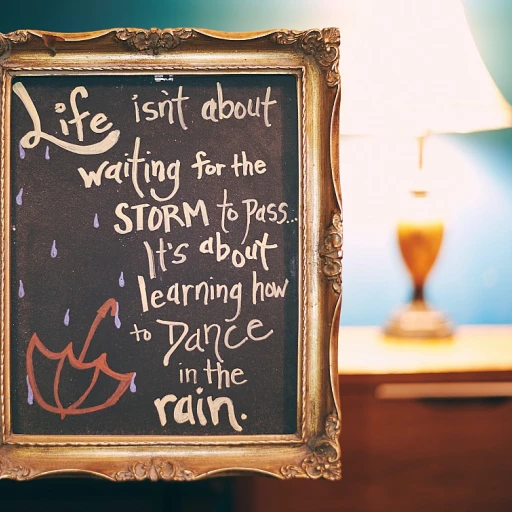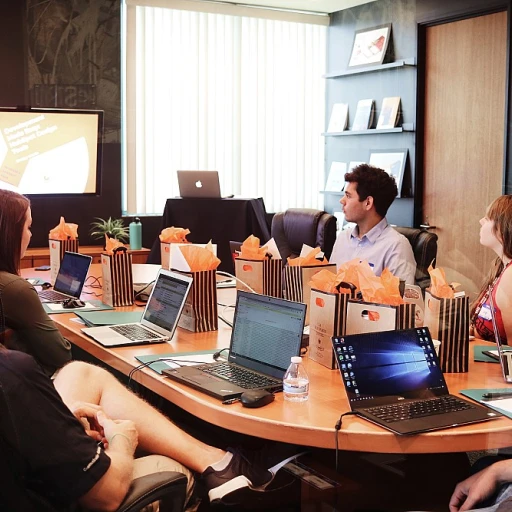Understanding the Role of Ice Breakers in Employee Engagement
Unlocking Employee Engagement Through Ice Breakers
Ice breakers have long been a staple in team-building events, especially when people are meeting each other for the first time. They are much more than just a fun way to break the ice; they play a crucial role in enhancing employee engagement by fostering connection and easing tension among team members. Whether it's introducing fun icebreaker questions at the start of a meeting or incorporating them into everyday work life, it's essential to understand their potential impact on team dynamics.
There are several reasons why ice breakers can be instrumental in engaging a team effectively:
- They help in creating a sense of belonging within the group, making every individual feel valued and heard.
- By initiating great conversations, ice breakers provide opportunities for team members to share personal anecdotes and express favorite experiences, fostering mutual understanding and trust.
- Funny icebreaker questions can transform the group dynamic, leading to a more relaxed atmosphere where creativity thrives.
- For remote teams, virtual icebreaker questions can play a vital role in bridging communication gaps, enabling team members to connect on a more personal level despite the miles apart.
Understanding how to use and craft these questions effectively is not just an art but a skill that management needs to develop. Utilizing resources like effectively launching a team project, managers can integrate these strategies into their existing efforts to maximize employee engagement.
Crafting the Perfect Ice Breaker Question
Creating Impactful and Memorable Ice Breaker Questions
Icebreaker questions can play an essential role in fostering a sense of community and engagement among team members. To create impactful and memorable questions, it is crucial to consider the environment, the team's culture, and the specific meeting context.
Firstly, identify questions that resonate with the group. The questions work best when they are easy for everyone to relate to and contribute to, sparking fun and lively interactions. Consider using questions such as, "What's your favorite way to spend the weekend?" or "If you could only eat one meal for the rest of your life, what would it be?" These open-ended questions allow for storytelling, allowing people to share more about themselves and creating a deeper connection.
The best icebreaker questions are often those that require minimal time to answer but still invite team members to think and respond creatively. For instance, "If you were a superhero, what would your superpower be?" This question not only injects a bit of fun but also reveals insights about the individuals in the group.
It's important to consider the dynamic of smaller or larger teams when crafting your questions. Simple and relatable queries can be great for small groups, while more thought-provoking questions can be suitable for larger teams where ice-breakers might serve as an initial interaction to break the ice.
Finally, remember to tailor the questions to the setting. In virtual settings or with remote teams, visual or interactive elements could enhance participation and ensure everyone feels connected. For further ideas, explore creative ice breakers to boost morale during your team gatherings.
Incorporating these strategies when crafting your icebreaker questions will maximize team building benefits, help squash anxiety, and ultimately highlight the personalities and strengths within your team.
Implementing Ice Breakers in Team Meetings
Bringing Ice Breakers into Your Team Meetings
Implementing ice breakers in team meetings can be a great way to engage employees and foster a dynamic work environment. By effectively integrating these activities, you can break the ice and encourage interaction among team members, making meetings more productive and enjoyable.
Choosing the right icebreaker questions is crucial in setting the tone for your meeting. Consider including a mix of fun and thought-provoking questions that are suitable for your specific group. For instance, ask team members about their favorite book or the best place they've traveled to this year. These questions not only engage the team but also allow for a glimpse into each individual's life outside of work.
It's important to allocate time appropriately for icebreakers. Too long, and it might detract from meeting objectives; too short, and it might fail to engage the team. As a rule of thumb, dedicate a small portion of the meeting agenda to these activities, ensuring a balance between fun and work.
For virtual teams, incorporating these fun icebreakers might require a little creativity, but the benefits remain substantial. Utilize virtual team games or ask funny icebreaker questions to keep the energy up. This fosters inclusivity and keeps remote team members actively participating, despite the physical distance.
Ultimately, implementing ice breakers requires a careful balance and a touch of creativity. When done well, these activities help in building rapport among team members, lighten the mood, and make work meetings something to look forward to.
For further strategies on how to boost engagement with creative approaches, consider exploring this guide to boosting engagement.
The Psychological Benefits of Fun Ice Breaker Questions
Unlocking the Mind: Psychological Advantages of Lively Ice Breakers
A critical aspect of employee engagement is recognizing the psychological benefits that come from incorporating fun icebreaker questions into team settings. Icebreakers are more than just casual questions; they serve as essential tools in promoting a sense of belonging and comfort within groups.
Consider how a simple icebreaker question can break the ice by easing tension and encouraging individuals to open up. For instance, asking about a favorite childhood game or the best meal ever eaten can allow team members to share unique personal insights, fostering a sense of connection and empathy.
These questions help in reducing anxiety and creating an environment where students and seasoned professionals alike feel at ease. Bringing fun into the workplace not only makes meetings more enjoyable but also supports positive interactions, resulting in enhanced team building. It’s a gateway to improving communication and collaboration skills as team members learn to see each other beyond just work roles.
Moreover, incorporating fun icebreaker activities can positively impact mental health. When people laugh and feel connected, it triggers the release of endorphins, naturally boosting their mood and reducing stress levels at work. It's a great way to kickstart team meetings and ensure everyone is in a positive mindset for productive discussions.
Interestingly, a well-structured icebreaker can also facilitate creative thinking. By encouraging team members to delve into questions that prompt reflection, they can enhance their problem-solving skills. Over time, this can contribute to a more dynamic and innovative atmosphere at work.
Given these psychological benefits, implementing icebreakers becomes an investment in your team's well-being and productivity. Whether you’re working with a virtual team or small groups, the positive impact is consistent—what you need is a good icebreaker strategy tailored to your team's specific dynamics.
Measuring the Effectiveness of Ice Breaker Activities
Assessing the Business Impact of Ice Breaker Sessions
Engaging employees successfully often requires more than simply holding fun icebreaker sessions. It's crucial to evaluate the effectiveness of these activities to ensure they are indeed contributing positively to team dynamics and employee satisfaction.- Gather Feedback: After implementing ice breaker activities, openly solicit feedback from team members. Ask questions about what they enjoyed, what they didn't, and how they felt the exercises impacted their feelings towards their colleagues and work environment. This will help in refining future sessions to align with the team's preferences.
- Employee Participation: Monitor attendance and participation levels during ice breaker sessions. A high level of engagement indicates that the questions and activities are well-received. Conversely, low engagement might suggest the need to tweak the format or selection of questions to better resonate with the team.
- Observe Team Dynamics: Post-ice breaker, observe changes in team dynamics. Are team members more communicative or cooperative? Such shifts can be a direct result of successful icebreaking and can lead to improvements in team building and collaboration.
- Measure Productivity: Examine if there are any changes in productivity and output from the team following regular ice breaker activities. A boost in morale often translates to increased work efficiency and motivation, which can be a strong indicator of the effectiveness of these activities.
- Conduct Surveys: Regular surveys can help measure how employees perceive the ice breaker sessions. Include questions that touch upon whether the ice breakers help them feel more connected to their peers or if they contribute to making the work environment more enjoyable.












